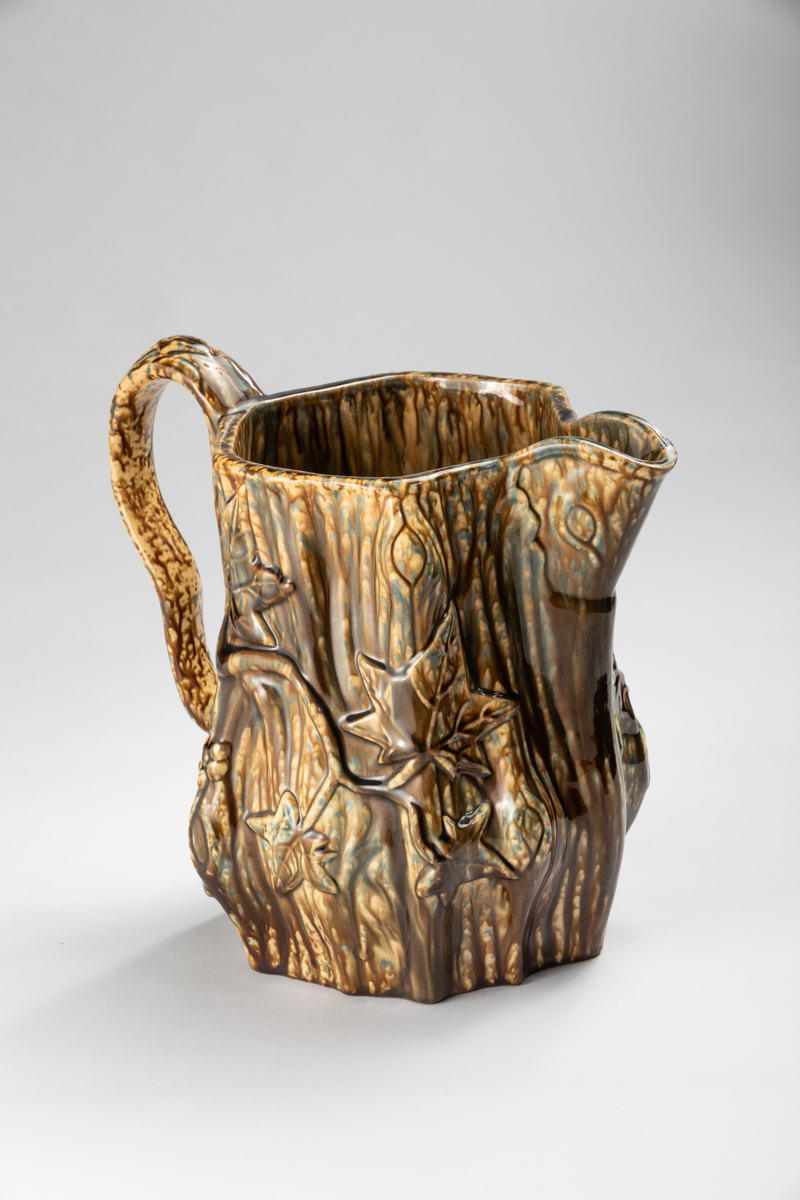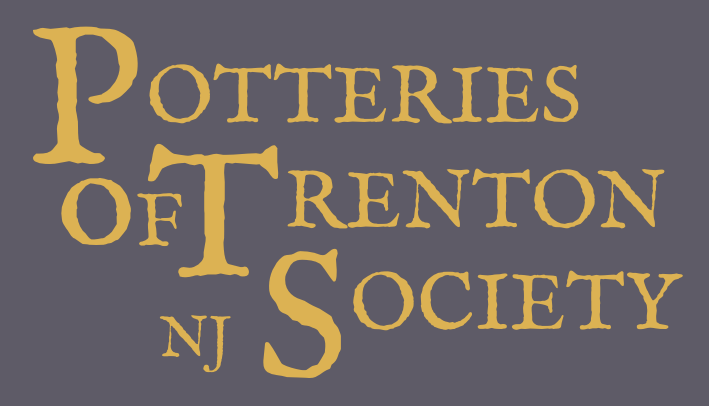
The history of the pottery that made this pitcher actually begins with Sheffield cutlery manufacturer Charles Hattersley (born England 1805). In 1852, Hattersley was impressed with the commercial success of porcelain trimmings—key escutcheons, door plates, door knobs and the like—turned out by Charles Cartlidge’s Greenpoint (Brooklyn), New York pottery. After traveling throughout New York, Connecticut, New Jersey, Pennsylvania, Delaware and Ohio, he concluded that Trenton was the best place for the manufacture of these goods, “situated as it is between two great markets…and the state abounding with fine clays and convenience for the collection of all other materials, such as coal, kaolin, flint, sand, feldspar, bone, etc., [that can be transported] by canal and railroad.” He spoke with a number of potters in the East and in Ohio that same year, but was unable to make a deal with any to occupy the Trenton property he had his eye on.
Hattersley also traveled to Staffordshire, England, to learn more about the processes of pottery manufacture, but when he returned to Trenton in the fall of 1852 he found that three potters recently practicing in East Liverpool, Ohio, had acquired the Trenton site he wanted to use. Hattersley moved on to another Trenton site and another group of potters, but that is the story of William Young and his partners.
Englishman James Taylor (1810-1887) and Henry Speeler (born ca. 1819), a native of Switzerland, became the first potters to establish an English-style pottery in Trenton for the manufacture of press-molded wares. They were stimulated to leave East Liverpool, Ohio, by Hattersley’s enthusiasm for Trenton, but had no interest in the porcelain hardware he wanted to make. Instead, they undertook in the fall of 1852 to build a pottery to make “Stone China,” or what is also called ironstone or white granite, which was becoming popular in the US as the standard tableware. By May 31, 1853, the State Gazette reported that the pottery offered “Queensware, Rockingham and Cane colored fireproof ware at their new establishment.”
On June 4, the Gazette marveled at “a beautiful specimen of pitchers of Rockingham ware. … The process of manufacturing and glazing this ware is curious and interesting.” Surely this handsome pitcher is an example of the ware being described. Press-molded in the form of a tree trunk with ivy, the buff-colored stoneware pitcher is covered with a brilliant mottled brown, green and blue glaze that enhances the woodland theme of its shape and low-relief decoration.
In 1856, Taylor, Speeler and Bloor received the silver medal of the Franklin Institute for “China, Granite and Earthen Ware” that the committee considered “fully equal to the best heretofore exhibited; the granite [ironstone] is the best we have seen of American production, the body equal to standard manufacturers abroad…” The firm also received a First Class Premium, the Institute’s highest award, for “The Rockingham and Yellow Ware, [which] maintains the high reputation these manufacturers have long enjoyed.”
Although the pottery began under the name Taylor & Speeler, changes in ownership were made in 1855 that resulted in the firm being renamed Speeler, Taylor and Bloor to include William Bloor, an associate from East Liverpool. The same large rockingham pitchers were made by both firms, but the earlier ones are marked “Taylor & Speeler” (1853-55), while those made under the subsequent partnership are marked “Speeler, Taylor & Bloor” (1856-60). Bloor had returned to East Liverpool in 1859 to open his own pottery, but did not convey his Trenton interest until April 1860. And in October 1860, Speeler sold his interest to John F. Houdayer. Pottery continued to be made at this site until 1904 through many subsequent ownerships.
Large Pitcher, 1853-1855, press-molded buff-colored earthenware with mottled brown, green and blue glazes, marked “TAYLOR & / SPEELER / TRENTON / NJ” H 10 in. Collection of the New Jersey State Museum, Museum Purchase CH1968.161. Photograph by Richard Barros.
–Ellen Denker
Photographed as part of a collaborative project with the New Jersey State Museum. The project was made possible, in part, by a grant from the Mercer County Division of Culture and Heritage, in partnership with the New Jersey Historical Commission, Division of Cultural Affairs/ Department of State.
